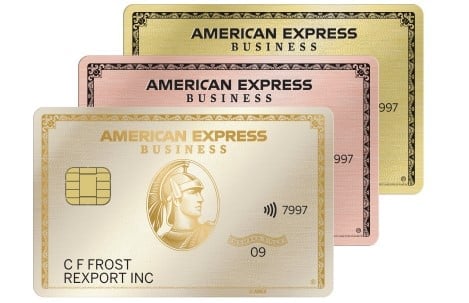SBA 8(a) Program: What It Is and How It Works
Review the benefits of participating in the SBA 8(a) program, eligibility requirements and how to apply.

Many, or all, of the products featured on this page are from our advertising partners who compensate us when you take certain actions on our website or click to take an action on their website. However, this does not influence our evaluations. Our opinions are our own. Here is a list of our partners and here's how we make money.
The U.S. Small Business Administration may be best known for its SBA loan program, which partially guarantees small-business loans for eligible entrepreneurs. But sponsoring loan programs is not the only way the SBA helps promote small-business owners, especially those at an economic disadvantage. The independent federal agency also sponsors business assistance programs, such as the SBA 8(a) program.
How much do you need?
We’ll start with a brief questionnaire to better understand the unique needs of your business.
Once we uncover your personalized matches, our team will consult you on the process moving forward.
What is the SBA 8(a) program?
The SBA 8(a) Business Development program helps socially and economically disadvantaged small-business owners secure coveted government contracts. Through the nine-year program, members can also access training and technical, financial and management assistance to help their business grow and compete for contracts.
The process of securing government contracts can be difficult and complex, especially for socially and economically disadvantaged individuals, who are competing in an economic landscape that, all too often, is stacked against them. However, if secured, government contracts are usually long term, offer good pay and timely payments, which means they can provide small-business owners with massive opportunities for growth.
According to the SBA, the federal government’s goal is to set aside at least 5% of their annual federal contracting budget to small businesses that are at least 51% owned and operated by socially and economically disadvantaged entrepreneurs.
SBA 8(a) program benefits
Benefits for businesses participating in the SBA 8(a) program include:
The opportunity to win set-aside and sole-source contracts (contracts issued to eligible businesses without competition).
Access to a dedicated expert to help navigate the government contracting process.
Mentorship from established and experienced business owners through the mentor-protégé program.
The opportunity to participate in joint ventures with established businesses.
Additional management and technical assistance through the SBA 7(j) program.
SBA 8(a) requirements: Who is eligible?
To qualify for the SBA 8(a) program, applying businesses must first meet the SBA’s definition of a small business. (You can use the SBA’s online Size Standards Tool to learn more.) Applicants must be U.S. citizens, and the SBA will also take into account more qualitative factors, such as character and potential for success. Also, businesses can only participate in the SBA 8(a) program once, so those that have already participated can’t reapply.
The crux of this program’s eligibility criteria is that the businesses must be at least 51% owned and controlled by economically and socially disadvantaged individuals, according to the SBA’s definition of each term.
Socially disadvantaged individuals
The SBA defines socially disadvantaged individuals as “those who have been subjected to racial or ethnic prejudice or cultural bias within American society because of their identities as members of groups and without regard to their individual qualities.”
The SBA also designates members of specific groups as socially disadvantaged, and therefore eligible for the 8(a) program. These groups are:
Black Americans.
Native Americans, including Alaska Natives, Hawaii Natives or members of a federally or state recognized Indian Tribe.
Hispanic Americans.
Subcontinent Asian Americans.
Asian Pacific Americans.
For individuals who are not members of these designated groups, the SBA also recognizes social disadvantage in individuals who have an objective distinguishing feature, such as race or ethnic origin, but also gender, identifiable disability or long-term isolation from mainstream society. These disadvantages must have negatively impacted an individual’s education, employment or business history.
Economically disadvantaged individuals
The SBA considers economically disadvantaged individuals to be “socially disadvantaged individuals whose ability to compete in the free enterprise system has been impaired due to diminished capital and credit opportunities as compared to others in the same or similar line of business who are not socially disadvantaged.”
These guidelines consider both net worth and personal income: Net worth must be less than $850,000, excluding equity in primary personal residence and funds invested in a retirement account. Personal gross income over the preceding three years must be below $400,000. Note that these exclusions for calculating net worth do not apply to asset valuation or loan applications.
» RELATED: Best business loans for minorities
How to apply for the SBA 8(a) program
You can apply for the SBA 8(a) program online; however, the SBA also recommends meeting with a local SBA resource partner, which you can find via the SBA website.
Make sure your business is eligible
Before you can apply, make sure your business is eligible for 8(a) certification by answering some quick questions on the SBA’s certification website. These will help you understand the following:
How much the government has awarded to businesses in your industry based on your business’s NAICS code.
If your company has the experience to begin contracting with the federal government.
If your business is eligible based on the economic and social qualification requirements.
Gather documents
If you determine that you are eligible for the program, you can use the application checklist to begin gathering documentation. Specific documents vary based on business type (e.g., sole proprietor, LLC, S-corp), but you can generally expect to submit the following:
Ownership documents such as articles of incorporation or bylaws.
Business financial documents like profit and loss statements, tax returns and recent contracts.
Personal documents like proof of U.S. citizenship, your resume and personal tax returns.
Create your System Award Management (SAM) account
To actually begin your application for the SBA 8(a) program, you will need to create a business profile at SAM.gov. This profile enables you to create your account on the certification website, where you will ultimately submit your application. If approved, you will also update this profile to show contracting officers that your business is in the 8(a) program.
Wait for a decision
The SBA will notify you through the certification website if your application is approved, which can take up to 105 days from the time you submit your application. If you are approved, your SAM profile will detail your program entry and exit dates, and your local SBA office will contact you directly to provide further details.
If you run into any questions about uploading supporting documentation online, you can reach out to [email protected] or use the certify help desk online resource. Also, note that businesses participating in the SBA 8(a) program undergo annual reviews of ownership and management documents, NAICs code and fiscal year-end information to ensure they continue to meet the 8(a) requirements. Terms last for a maximum of nine years, but both the SBA and the participating business can shorten that term.
This article originally appeared on Fundera, a subsidiary of NerdWallet.






